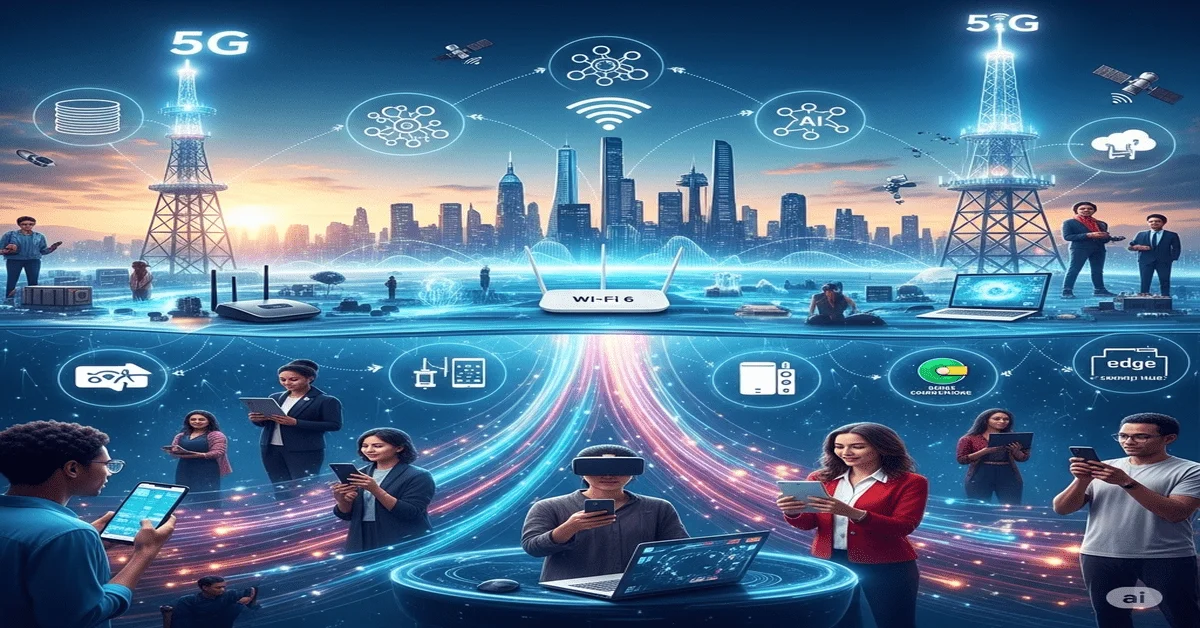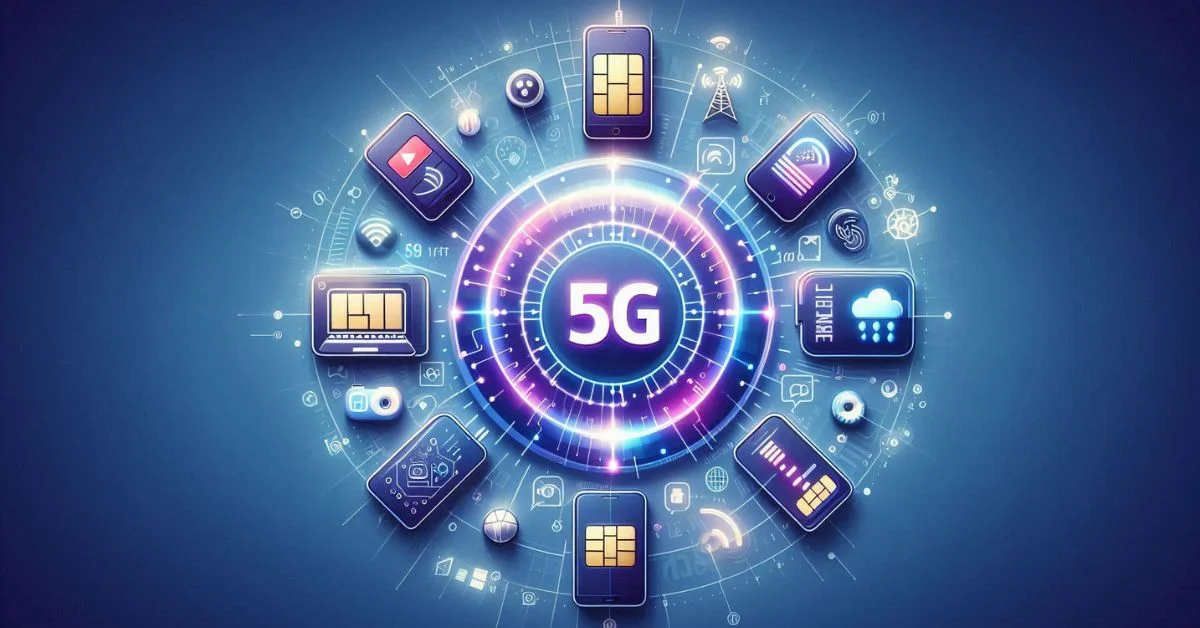In today’s digital-first world, staying connected is more than a convenience; it’s a necessity. Whether we’re streaming a movie, working from home, attending virtual classes, or using smart devices, everything relies on strong, fast, and secure internet connectivity.
Emerging internet trends are revolutionizing how we stay connected, making digital experiences more seamless, secure, and accessible for individuals, businesses, and communities.
What is Internet Connectivity?
Internet connectivity describes the speed, reliability, and efficiency with which we access digital content and online services. It’s not just about speed, though fast internet is essential, it also includes:
- Stability (no buffering or dropped calls)
- Reachability (even in rural areas)
- Smart performance (managing multiple devices at once)
- Security (keeping data safe and private)
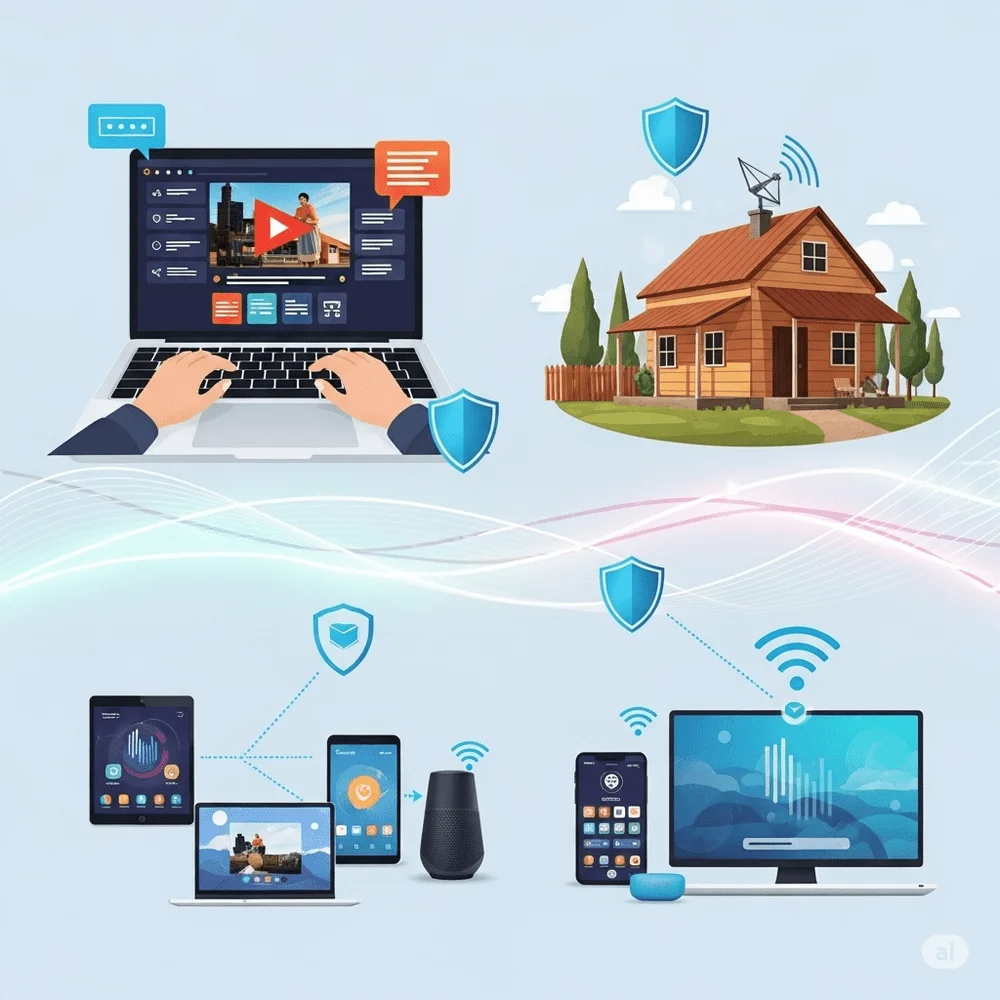
Improved connectivity means better user experiences, smarter technology integration, and greater opportunities for everyone.
Why Are Emerging Trends Important?
Traditional internet connections like dial-up or basic broadband can’t keep up with the demands of today’s digital world. We now rely on high-speed, low-latency networks to power:
- Remote work and online education
- Cloud storage and real-time collaboration
- Smart homes, IoT devices, and connected vehicles
- Streaming services, gaming, and virtual reality
That’s where the latest connectivity trends come into play. They make our digital lives smoother, smarter, and more future-ready.
Top Emerging Internet Trends Enhancing Connectivity
Here are the key emerging internet trends revolutionizing how we connect, communicate, and collaborate online.
1. 5G Networks: The Next Level of Mobile Internet
5G is the fifth generation of wireless technology, offering speeds up to 100x faster than 4G and ultra-low latency. It’s no longer just about speed; today’s connectivity is designed to be more intelligent, stable, and dependable.
Key Benefits of 5G:
- Download movies in seconds
- Support for self-driving cars and smart cities
- Real-time gaming and virtual meetings with no lag
- Connects more devices simultaneously
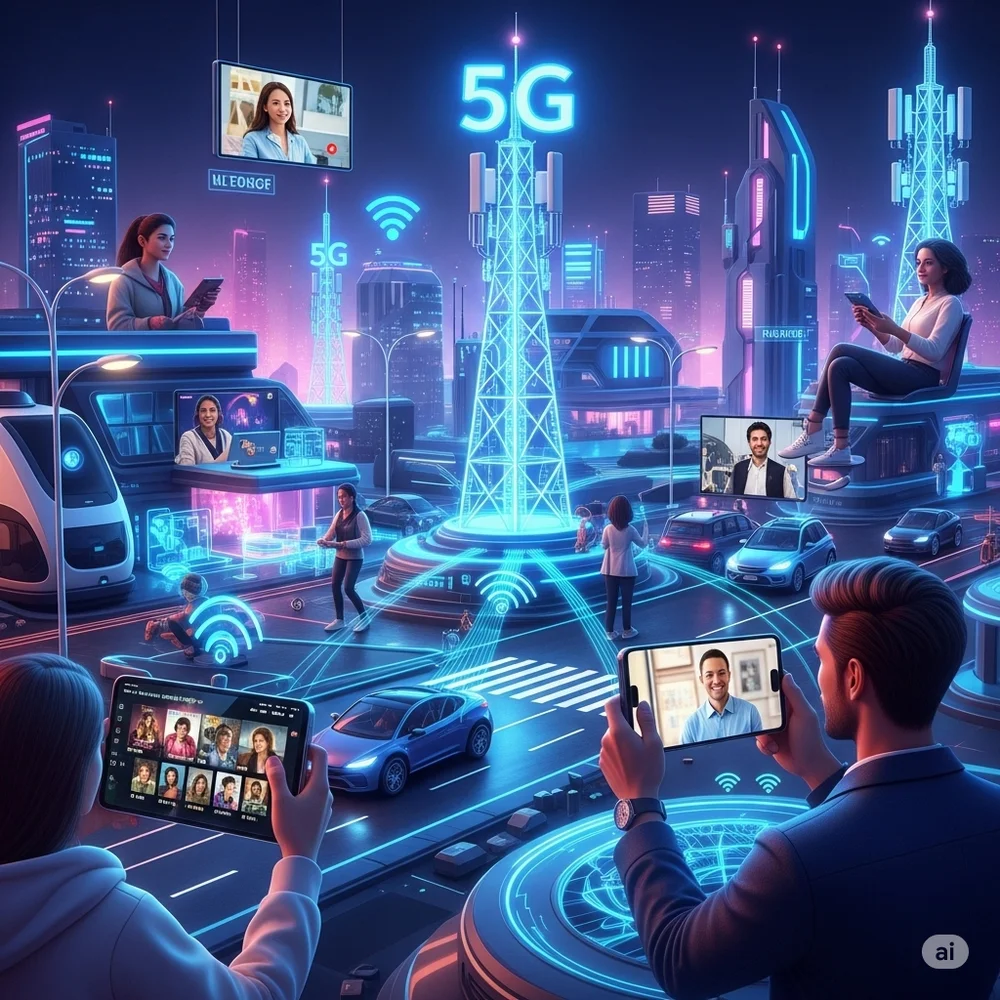
As 5G networks expand globally, mobile internet experiences will become smoother and more powerful than ever before.
2. Wi-Fi 6 and Wi-Fi 7: Better Indoor Internet
Wi-Fi 6 and the upcoming Wi-Fi 7 are upgrades to traditional Wi-Fi that support faster speeds, better range, and improved device handling, especially in busy homes or offices.
Why It Matters:
- Handles multiple devices efficiently
- Stronger signals in crowded spaces
- Extends the battery life of connected gadgets
- Ideal for smart homes and offices
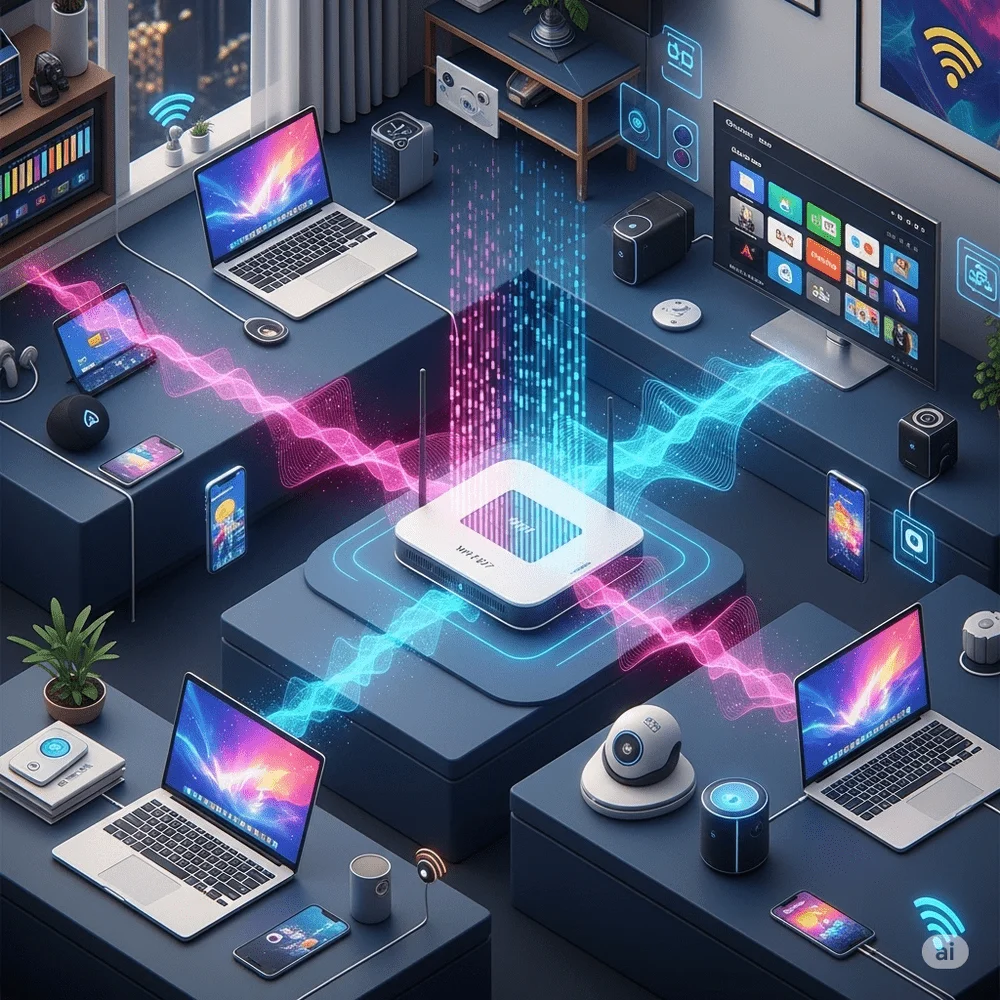
If you have many devices or face Wi-Fi slowdowns, upgrading your router to Wi-Fi 6 can significantly improve your connectivity.
3. Fiber Optic Internet: Lightning-Fast and Reliable
Fiber optics use light to transfer data, making them faster and more reliable than copper cables. They’re ideal for high-demand activities like streaming, video conferencing, and online gaming.
Advantages of Fiber Optic Internet:
- High-speed uploads and downloads
- Low interference and consistent connectivity
- Great for multiple users or devices
Many cities and towns are now investing in fiber infrastructure, improving internet access and quality across regions.
4. Internet of Things (IoT): Smarter Everyday Life
The Internet of Things (IoT) includes everyday objects connected to the internet, allowing them to collect, exchange, and respond to data in real-time. From smart thermostats to wearable fitness trackers, IoT enhances convenience and automation.
Examples of IoT in Use:
- Smart homes with voice control and automation
- Health monitoring via smartwatches
- Connected cars and smart traffic systems
- Energy-efficient appliances and systems
IoT devices thrive on stable, high-speed internet, pushing demand for better connectivity everywhere.
5. Cloud Computing and Cloud Storage
Cloud computing enables users to access applications, data, and services through the internet without depending on physical storage or local machines. It’s the backbone of remote work, digital collaboration, and data backup.
Why the Cloud Is Essential:
- Access files anytime, anywhere
- Collaborate in real-time with others
- No need for expensive hardware
- Secure data storage and recovery

Popular services like Google Drive, Dropbox, and Microsoft 365 have made cloud technology part of our everyday lives.
6. Edge Computing: Speed Where You Need It
Edge computing processes data closer to where it’s created rather than sending it to distant servers. This technological approach minimizes latency and enhances the responsiveness of systems that require real-time data processing.
Use Cases of Edge Computing:
- Self-driving cars are making instant decisions
- Smart surveillance systems with real-time alerts
- Industrial equipment monitors itself for issues
- Interactive gaming and live video processing
Edge computing boosts speed and efficiency by processing data closer to the source, delivering more intelligent and seamless user experiences.
7. Satellite Internet: Connecting Remote Areas
Satellite internet is transforming access for rural and remote regions. Providers like Starlink are launching low-earth orbit satellites to deliver fast, reliable internet almost anywhere.
Benefits of Satellite Internet:
- Expands access in underserved areas
- Enables online learning and remote work in rural zones
- Works in emergencies and disaster zones
- Requires minimal physical infrastructure
While latency is still a challenge, continuous advancements are improving satellite-based services every day.
8. Artificial Intelligence (AI) in Connectivity
AI is playing a growing role in managing internet networks, enhancing user experiences, and improving system reliability.
How AI Enhances Connectivity:
- Predicts and fixes issues before they affect users
- Personalizes bandwidth based on user behavior
- Powers chatbots and smart support systems
- Optimizes traffic across networks automatically
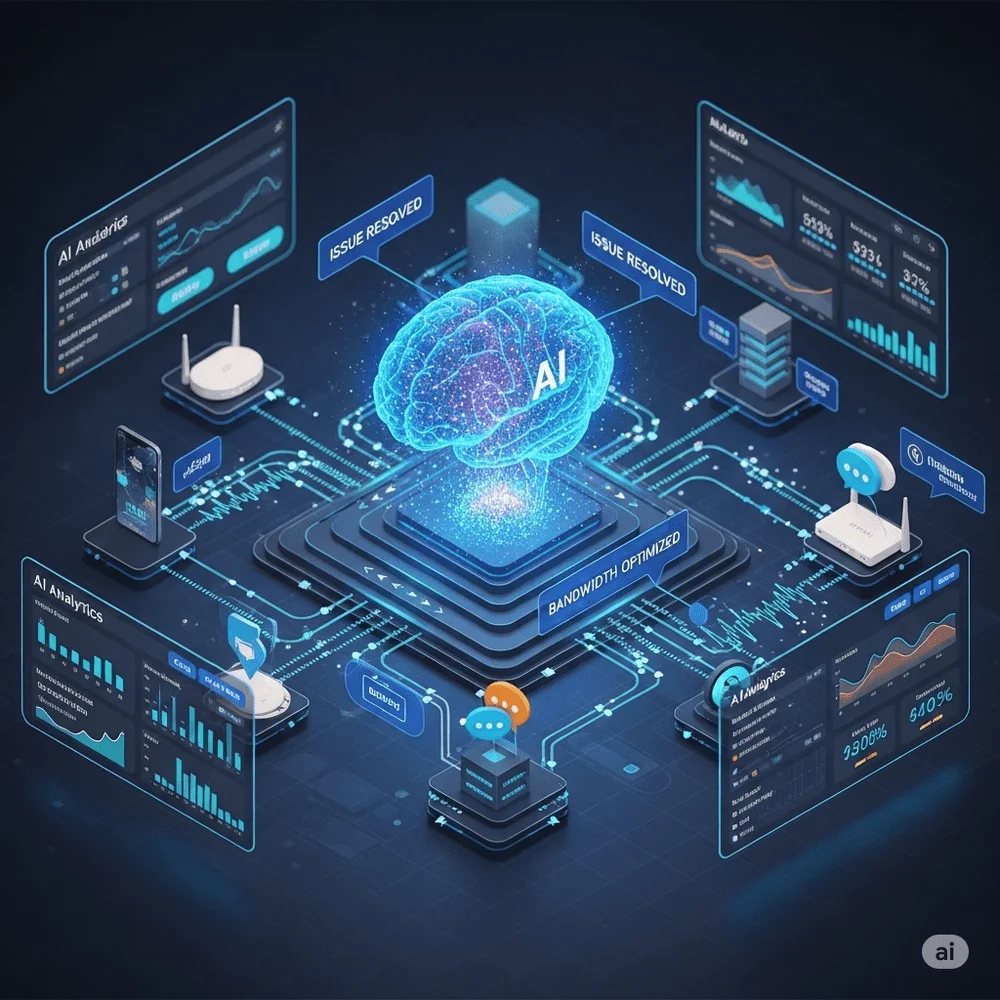
Artificial Intelligence plays a vital role in building adaptive, responsive, and self-optimizing internet frameworks that anticipate and resolve issues proactively.
9. Mesh Networking: Say Goodbye to Dead Zones
Mesh networks use multiple small routers working together to extend Wi-Fi coverage throughout a home or building. They ensure strong signals even in hard-to-reach corners.
Advantages of Mesh Networks:
- Seamless coverage across large spaces
- Automatically switches to the strongest signal
- Simple setup and scalability
- Ideal for smart homes and offices
Mesh networking is a smart upgrade if you struggle with weak signals in certain rooms.
10. Cybersecurity and Safe Connectivity
With improved connectivity comes the need for stronger online protection. Cybersecurity trends are evolving to ensure safe, private digital experiences.
Top Cybersecurity Practices:
- Use VPNs to protect data on public networks
- Enable two-factor authentication
- Keep software updated and patched
- Avoid suspicious links and apps

AI-driven security systems now detect threats in real-time, helping users stay safer without manual effort.
Global Efforts for Digital Inclusion
Governments and tech companies worldwide are joining forces to expand internet access. Initiatives include:
- Rural broadband infrastructure projects
- Free public Wi-Fi in libraries, stations, and parks
- Affordable devices and data plans
- Digital literacy programs in schools and communities
A more connected world means more opportunities for education, health, and economic growth, no matter where you live.
Final Thoughts
Emerging internet trends go beyond speed; they focus on smarter, safer, and more inclusive digital experiences. Technologies like 5G, Wi-Fi 6, and AI are driving a better-connected future. By adopting these innovations, users can enjoy improved streaming, productivity, security, and smart living. The evolving internet is ready to enhance life in every way, one step at a time.
